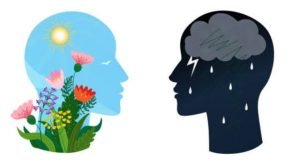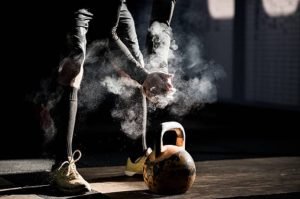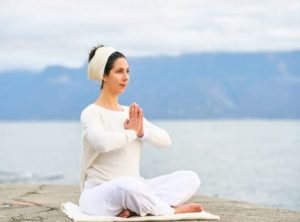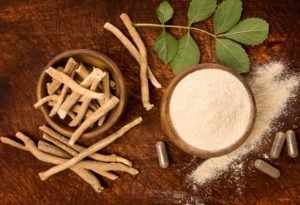
by admin | Jun 4, 2022 | Massage
Foot Massage
Foot massage or foot reflexology has a Chinese origin. It dates back to more than 3,000 years ago and is used in the prevention and cure of many health ailments. Some in fact say foot massage dates back to ancient Egyptian times due to archaeological findings in cave drawings in Egypt.
The principle of foot massage rests in the premise that the meridian network connects all tissues, organs and cells in our body. Each organ in the body is connected to a specific reflex point on the foot through the intermediary of nerves. A trained foot massage therapist is usually called a reflexologist or zone therapist. A reflexologist can put pressure on different meridians or energy lines on the sole, top and side of the feet to determine the cause of illness.
By using pressure to these reflex points, the foot massage is good for stimulating the activity of internal organs, and to improve blood flow and lymph circulation. Thus, the top to bottom well-being of a person can be made through the feet.

The principles of foot massage is not usually in congruence with western allopathic medicine. Western medicine merely sees the foot as a body part comprising of bones, ligaments and joints.
However, foot massage is fast gaining much popularity and acceptance as an alternative health treatment. In fact, over recent years it has become regularly the number one requested holistic therapy amongst complementary treatments s recorded by a number of complementary societies.
Fans of foot massage believe it can cure not only colds and minor ailments, but more serious ailments as well. These ailments include liver dysfunction, constipation problems, chronic headaches, skin allergies and much more. Like most Oriental medical techniques, foot reflexology is a holistic treatment. It concentrates on treating the whole person rather than just the symptoms of one particular ailment.
While Western medicine promises speedy recovery of all unpleasant symptoms, foot massage therapy does not, nor should it. It can be slow and gradual but with longer lasting effects seeing as it aims to treat the root cause and not just symptoms. A series of visits is necessary to strengthen the body and to bring the body back to balance. It is important to see a qualified therapist who will have had many years of training and case studies as this will yield the best outcome.
An average session of foot reflexology in the US, can set you back as much as US$40-100. In the UK depending on where you are, the prices can be similar at 30 – 75 pounds per hour, Thus, foot massages over a period of time, can add up in terms of costs. But the benefits will add up too and most therapists will certainly do group booking discounts if you take out a course of treatment.
Naturally, for practitioners and believers of foot massage, the cost for good health is well worth it. The alternative would have been money spent in clinics and western hospitals for prescription drugs and perhaps, invasive surgery. Not to mention time away from working or doing those activities which you enjoy.
Your health is always a priority and foot therapy or reflexology is certainly one that I would highly recommend you try as it really has many great benefits and is wonderfully relaxing too.

by admin | May 22, 2022 | Fitness, Health, Massage
Nature Therapy – What Exactly Is It?
What Is It And Why Do So Many Psychologists Recommend It Nowadays, as you may have learned in a previous article of ours, going to therapy is quite common. Psychology, in general, is one of the areas of study with the most development in the last few decades. Due to the growing interest in the subject, we constantly find newer ways our brain is connected to different aspects of life.
One of the connections which we started exploring in recent years is that between humans and nature. Although we all know that we are entangled with our environment, we started understanding and using its benefits only recently, which is how nature therapy was born.
So What Is Nature Therapy?

The definition of nature therapy is relatively simple – it’s the practice of being in a natural environment in order to boost your mental health.
There are a few different types such as:
- Adventure therapy – rafting, skiing, climbing, and more similar activities done outside
- Meditation – meditating in parks, gardens, beaches, etc.
- Animal-assisted therapy – playing with dogs, cats, rabbits, etc. looking at birds, squirrels, and other wildlife
- Art therapy – drawing landscapes, sculpting wood, decorating leaves, rocks, and more
- Green exercise – running, doing yoga, cycling – outdoors, in parks, gardens, yards, etc.
- Horticulture – gardening, planting, and harvesting fruits and vegetables, trimming leaves, etc.
- Wilderness – camping, hiking, climbing mountains, visiting waterfalls, etc.
Many people try different approaches to find the one that fits them the best.
All of these can be done with the professional therapist that recommended them (if they’re willing to participate), with an organized group, or as a planned trip by the patient themselves. There are many more ideas that can be done as nature therapy, but these are the most common ones.
Benefits And Popularity

Being in nature is known to have a calming effect for pretty much everyone, especially right now, because of the urbanized environment we all live in. Looking at trees and flowers, enjoying the quiet vistas, landscapes, birdsong forests, or beaches is therapeutic to kids just like it is to the elderly.
Nature therapy is shown to help people battling anxiety, depression, ADHD, and many more mental conditions. Even though it’s not all-powerful and shouldn’t be used instead of medication, being in nature has a positive effect on these illnesses because it releases tension, reminds the person of compassion while managing to stay engaging for people with attention problems.
Many people with depression have stated that most of the nature therapy practices make them feel connected, which brightens up their day every time. Some share that walking barefoot is maybe the easiest way to get in the right headspace and start enjoying the different practices of nature therapy.
Another reason why it helps is that some practices are calming for people that are anxious, stressed or tired (art therapy, horticulture, and meditation for example), while others are engaging for people with attention problems or those who are restless (like adventure, green exercise and wilderness).
Conclusion
Nature therapy is a non-medicinal practice for relieving stress and managing different problems regarding the mental health of an individual. It is valuable and enjoyable for pretty much every person regardless of age, gender, or background and can be practiced all around the globe. Its benefits stem from our biological upbringing and the underlying causes of some of our troubles.
Nature therapy can help with sleep, emotional connection, anxiety, attention problems, and many more, and it does so while also providing a new and exciting experience. Nature therapy seems to be something that more and more people try and end up loving so much it ends up being a part of their lives they look forward to, and with all its positive sides, we completely agree with them.
Do YOU do nature therapy? If yes, what is your favorite? Comment below!

by admin | Jan 7, 2022 | Massage
Why a massage is nice for pre and post-natal women
Prenatal massage has a variety of therapeutic effects on pregnant women. Massage is not only good to the mother, but it is also advantageous to the baby inside the mother’s womb. Through Prenatal Massage treatment, a skilled massage therapist may give a lot of comfort to pregnant women. They are skilled in dealing with mothers to be and post-natal mums and are able to provide a lot of support and complete comfort.
Pregnancy massages help to calm and relax the mother’s nervous system. This can help them sleep better at night, which is critical for both the mother’s and the baby’s health. Some women feel mental anxiety and stress during pregnancy, which can be alleviated by pregnancy massage and further enhanced by a kind and caring supportive therapist.

Most physicians advise women to get a relaxing prenatal massage since it will keep them well and comfortable and minimise the risks of complications after birth. Pregnancy massages are classified into two types: labour massages and postnatal massages. The labour massage may be highly beneficial to mums who are expecting their children soon, and as they enter labour. They have a fantastic calming impact on them. This is done on the pregnant woman when she is lying on one side in a reclined position. She can also lie down slightly on her tummy – very gently – if she has a pregnancy pillow below it.

It is usually recommended to play calming music in the background to relieve tension in the mother’s mind, which will assist her in enduring the pain and expedite the birth. Special prenatal massage treatments are also necessary after the delivery, throughout the postpartum phase. This assists the women in regaining their body form. Massages can be carried at any time during the pregnancy but usually just to avoid any complex situations its best to wait until at least the 2nd month, or even 2nd trimester. Massages before and after pregnancy improve skin suppleness and reduce muscle stress and pain.
If the mother is suffering from postnatal depression, the pregnancy massages will most likely assist her in recovering and bonding with the baby. It would help if the mother has sought any necessary medical counsel before pursuing prenatal or post-natal massage treatment because it depends on the mother’s physical state whether she would benefit from it or not.
Expectant mothers frequently experience unique mental and physical alterations due to a rise in body weight, a change in hormone balance, and a shift in posture. They also feel pressure on their knees, feet and back. Prenatal massage therapy treatments frequently assist patients in overcoming these unpleasant pregnancy symptoms.
Prenatal massage and other pregnancy massages frequently alleviate severe back discomfort and ache in the neck and shoulders. Massage methods are also used to relieve discomfort in the pelvic region. This massage also improves blood circulation and digestive power. Massage during pregnancy increases skin suppleness, which decreases stretch marks.
So if you want to have more peace and calm, feel more supple, less aches and pains, and help avoid stretch marks, maybe pre and post-natal massage could be for you. Please ensure you consult a fully qualified pregnancy masseur.
Blessings and happy pregnancy
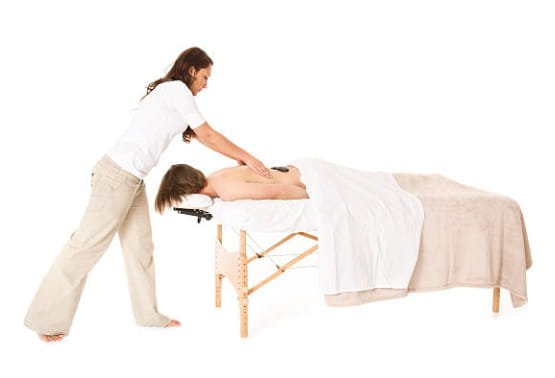
by admin | Jan 7, 2022 | Massage
Full Body Massage
A full body massage is one of the most commonly applied techniques for therapy. Many of those who have tried it have claimed that it does balance and relax the entire body, leaving the person feel both physically and mentally soothed.
Well, a full body massage is a system of stroking, pressing and kneading the different areas of the body to relieve pain, stimulate and tone, as well as relax the body. All of these can actually be attained as full body massage works deeply into the tired muscles, allowing the body to release toxins that were trapped within the systems.
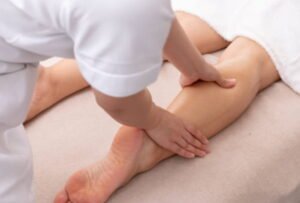
Perhaps what’s more worth noting about full body massage is that it does much more than create a pleasant sensation on the skin.
Numerous reports have noted that although the massage soothes the skin and affect the muscles just under the skin; its benefits may even reach the deeper layers of the muscles. Chances are, the organs of the body themselves will also be affected, significantly.
More to that, a full body massage stimulates blood circulation. Experts have further revealed that this therapeutic practice may aid the lymphatic system of the body, which actually runs parallel to the circulatory system.

A full body massage, as the name implies, includes massage of all parts of the body, from head to toe. However, of all the parts involved in the massage, it is basically the back that needs the largest amount of time to be pampered. Well, this is partly because the back represents such a large part of the body, and it is the very common place for people to accumulate tension.
Aside from the back, another area of focus in a full body massage is the neck and shoulders. These parts are the common areas of soreness and tension, so most therapists focus more on these parts than the other areas of the body. Also, to have the pain and tension eased away from the neck and shoulders can be a source of great pleasure.
The chest also needs attention but rarely these days is it included in massage. Some therapists will massage the decollate and upper chest area over the clavicle etc. Usually, when massaging the chest, the massage therapists change their position from time to time to make the receiver comfortable with the massage.
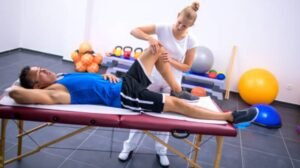
After the chest, the abdomen becomes the focus of a gentle touch. Again, it is often sadly excluded from many massages and yet requires focus and attention. It is however important to have a very good knowledgeable therapist for any abdominal massage.
As you may know, the abdomen is the softest and least protected area of the body. Given this fact, it’s no doubt that the abdomen is also the area of great vulnerability for many people. So, when massaging this part for a full body massage, therapists need to work very gently and rhythmically, only increasing the pressure once the receiver feels relaxed and secured.
There are also the lower parts of the body, including the legs and feet that need to be pampered with a full body massage. Massaging these areas will ease the pain and tension present and revitalise in the long run these weight-bearing parts of the body. The people who usually find a legs and feet massage useful are those whose jobs entail a lot of standing, like the sales ladies out there in the malls, or people on their feet a lot like nurses and mums, but also active sports people like footballers and dancers.
Going back to the upper part of the body, a full body massage involves massaging the head and face of the receiver. Many find the amount of tension they hold here a bit surprising, particularly around the jaw, but many have said that it’s a pleasurable experience. But unlike the other parts of the body, these areas are often ignored in a full body massage.
Finally, a full body massage involves work on the arms and hands, which are constantly used throughout the day. When these parts are touched, tension faded, leaving the person relaxed and with an improved sense of well-being.
I personally have always found the full body massage essential in maintaining a good state of well-being – I suggest you try it at least once to see these amazing benefits.














